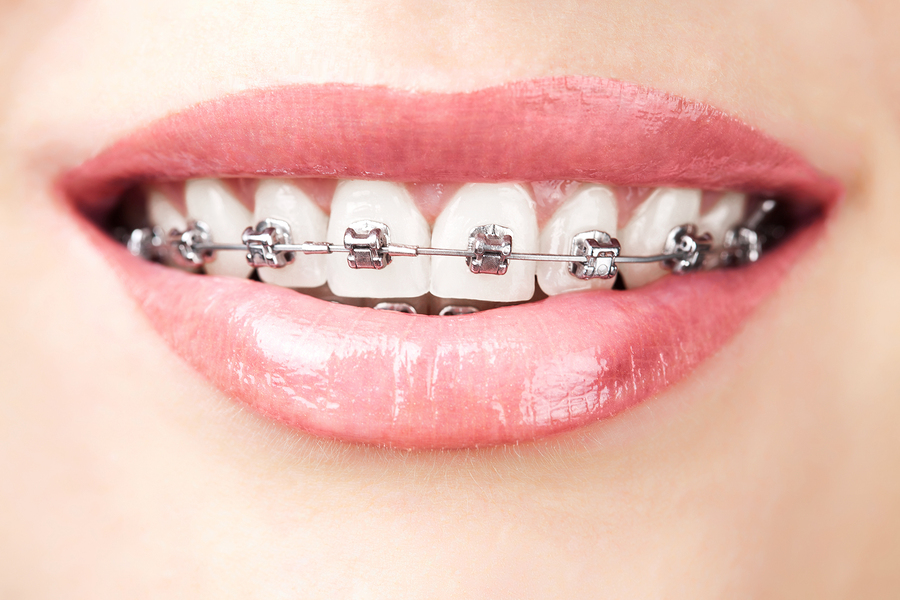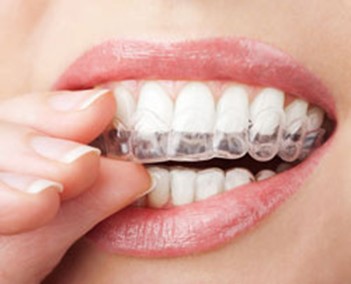Financial News
What is an Orthodontist? What does an Orthodontist do?
Orthodontists help patients of all ages keep their smiles functional, beautiful, and properly aligned.
FREDERICK, Md. - Oct. 20, 2022 - PRLog -- For many of us, the braces on our teeth were just part of growing up.
For an orthodontist, helping patients of all ages maintain healthy, straight teeth is part of a lifelong dedication to advanced dental technology and craftsmanship. These uniquely qualified specialists help adult and pediatric patients keep their smiles functional, beautiful, and properly aligned.
What is an Orthodontist?
Orthodontists are dentists who specialize in the prevention, diagnosis, and treatment of dental misalignment issues. Their practices focus on teeth straightening and other bite correction issues. Although orthodontic care is usually associated with metal braces and retainers, there are now many other advanced tools available to treat tooth, jaw, and facial irregularities.
The American Association of Orthodontists (AAO) recently renamed this specialty Orthodontics and Dentofacial Orthopedics. This new title reflects the fact that certified orthodontists, including Dr. Tigani of PearlFection Dentistry, also provide orthopedic treatment to guide and influence the growth of the face and jaw.
Most orthodontic patients begin treatment between the ages of 8 and 14. The dedicated pediatric dentists at PearlFection Dentistry work closely with Dr. Tigani to ensure orthodontic issues are treated proactively as their young patients grow. Many adults also benefit from orthodontic treatment for a variety of teeth straightening and cosmetic procedures.
Teeth Straightening and Teeth Crowding
The aesthetic value of straight teeth is obvious, but orthodontic care has many other benefits including improved speech, chewing, and dental hygiene. Correction of a malocclusion (bite misalignment) can also relieve uncomfortable physical pressure on the teeth and facial muscles.
- Dental crowding or "teeth crowding" is a common type of misalignment that occurs when there is not enough space in the mouth for teeth to grow properly. This can be caused by genetic issues, wisdom teeth growth, or premature loss of primary (baby) teeth, among other things. Fortunately, teeth crowding can usually be corrected through orthodontic treatment.
- Overbite and Underbite are other categories of misalignment where either the upper or lower set of teeth protrudes noticeably. These conditions can also be genetic but are sometimes caused by habits like thumb-sucking in children. Braces and other types of orthodontic appliances are effective in treating these malocclusions.
How do Braces Work?
The familiar "train-track" style braces we have grown accustomed to have been used by orthodontists for generations for one simple reason: They work!
The materials and techniques used to install and adjust braces have improved over the years, but the basic working principal remains the same: A combination of parts installed on and around the teeth creates a source of constant, gentle pressure.
- Brackets made of stainless steel, ceramic, or plastic are bonded to the teeth. These brackets make it possible to control the pressure applied to each tooth individually.
- Archwires are long, curved wires that feed through the individual brackets. The tension in these wires transfers the pressure needed to realign the bite.
- Elastic bands or "ligatures" are fitted around the brackets as needed to fine tune the amount of pressure in each direction.
- A Buccal tube attached to a molar creates an anchor point for the braces and gives the orthodontist a point from which to release or tighten the archwire.
The training and expertise of the orthodontist is called upon to design both the braces and the overall treatment plan. Over the course of multiple visits spanning months or years, the components of the braces work together to slowly move the teeth into their intended position.
What else can an Orthodontist do?
As experts in the function and development of the teeth, jaw, and facial structure, orthodontists, sometimes working with pediatric dentists, general and cosmetic dentists, oral surgeons, prosthodontists, and other specialists, apply their expertise to improve teeth beauty, function, and alignment in a variety of ways.
The field of orthodontics has expanded to include many other options in addition to traditional metal braces.
- Clear braces – This recent alternative to metal braces uses a series of customized, removable, transparent trays known as "aligners" to gradually engender straight teeth. The Invisalign system must be worn for about 22 hours each day but can be removed for brushing/cleaning. Adult patients are often more self-conscious than children when it comes to wearing braces, so the less noticeable form factor is a good alternative. Although Invisalign can be credited with starting the clear braces revolution, other suppliers, including 3M, have now entered the market with their own distinct offerings.
- Retainers – Can either be permanently fixed to teeth or removable plastic and metal appliances that fit snugly within the palette with a formed wire holding the teeth in position. Although retainers are often used to maintain teeth straightening after braces are removed, they can also be used to correct minor misalignments that don't require braces.
- Veneers – Thin, customized porcelain or composite "shells" are permanently bonded to the front surface of natural teeth to improve appearance, fill in gaps, and compensate for minor misalignments.
Invisalign vs 3M vs generic aligners
Since the Invisalign patent expired a few years ago, several companies have entered the marketplace. One of the leaders is 3M. Some orthodontists, including Dr Tigani, prefer the service, performance, and ultimate outcome the 3M aligners provide for their patients. 3M aligners have several different options for material type and can be integrated with clear or metal braces. There are also generic aligners available that do not require consultation with an orthodontist or detailed 3D scanning and mapping, making them a more convenient and cost-effective option.
When do you need an Orthodontist?
For children, a pediatric dentist may be the first to recognize the need for orthodontic care. Beginning regular check-ups and teeth cleaning at an early age can be important when it comes to diagnosing and correcting orthodontic issues before they progress. With over 75% of orthodontic patients being under the age of 18, orthodontists are also adept at working with children and teens to make them feel safe and comfortable during and between visits.
Adult patients may already be aware of their teeth straightening or teeth crowding issues or may have developed new orthodontic issues due to illness or injury. In either case, Dr. Tigani and the highly qualified team of general dentists, pediatric dentists, oral surgeons, and prosthodontists at PearlFection Dentistry can help guide them through the host of available orthodontic options, including the latest in clear braces and Invisalign teeth straightening technology.
Can my regular dentist do orthodontic work?
Many patients don't realize that any dentist in the State of Maryland, after taking a short course, can fit a patient for clear aligners like Invisalign. After a slightly longer course, a general dentist can also put braces on patients. In these cases, the general dentist or pediatric doctor will rely heavily on the expertise of the aligner manufacturer to ensure the case progresses well. Another philosophy is that it is best for trained orthodontists to perform these procedures. At PearlFection Dentistry, our long held believe is that all dental procedures are best performed by dentists who specialize in those procedures. This means that at PearlFection Dentistry, only an orthodontist will do orthodontic work. We have found that this results in the best orthodontic outcomes.
Beautiful, straight teeth for children and adults could be just a phone call away. Call PearlFection Dentistry at (301) 663-5550 today to set up a consultation and begin the journey to a more radiant smile.
Contact
R Stewart Stringer
stew@pearlfectiondentistry.com
Photos: (Click photo to enlarge)




Read Full Story - What is an Orthodontist? What does an Orthodontist do? | More news from this source
Press release distribution by PRLog
Stock quotes supplied by Barchart
Quotes delayed at least 20 minutes.
By accessing this page, you agree to the following
Privacy Policy and Terms and Conditions.



